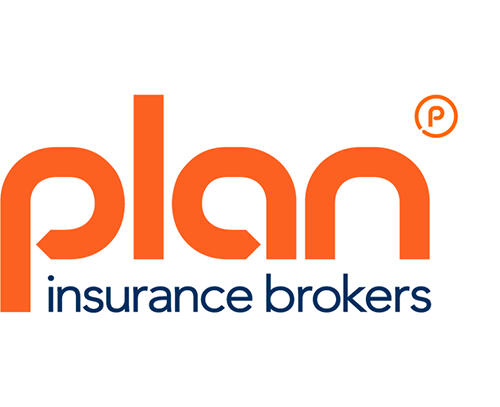Increased construction costs due to a higher than expected level of inflation might only seem to be an issue if you have a building project in mind. However, it’s worth noting that inflation can also have a serious knock-on effect to your property-owners and landlords’ insurance.
Here we explain in detail how and why landlords should review their declared rebuild values.
Plan Insurance can accommodate your Property Owners & Landlord Insurance needs. Just fill in our short online quote form, and our professional brokers will be in contact to arrange your insurance.
How does underinsurance present a risk to landlords?
Landlords should give careful consideration to their declared rebuild costs. The following advice could help prevent, during the course of making a serious insurance claim, the devastating realisation that you’ve been significantly underinsured.
Underinsurance occurs when a policy holder doesn’t stipulate the correct value to cover their property and/or their contents. Thus if a claim needs to be made the policy won’t provide sufficient funds to replace or repair the lost or damaged item(s) to the same standard. The onus for covering the shortfall will be on the policy holder, if they’re able to, as it could require a significant financial outlay.
So, a potentially small saving at the point of incepting cover could lead to a disastrous outcome. Your insurance company may also opt to impose an underinsurance clause if applicable. This means that a claim can be reduced in proportion to the amount of the under-insurance.
Calculating Property Rebuild Values
Experienced landlords will know that there is no direct correlation between a property’s retail value and its rebuild cost. When it comes to setting rebuild values on your landlords insurance policy, the sum that you need to insure your property for depends on multiple factors. These range from: the property type (i.e. detached, terraced etc.) ,the property’s size, construction materials used, finish specification, location, age etc.
Additionally professional fees, materials and labour costs must also be taken into account. These can add up to 20% of the overall rebuild project cost. So a significant shortfall will result if they are excluded from the declared sum insured. The buildings sum insured should also include outhouses, driveways, pathways etc (as well as VAT where applicable), assuming these features could suffer a total loss and need replacing. Extensions and renovations to properties are often considerable investments. Overlooking the need to increase the building sum insured for the property post completion of any works could result in a large value underinsurance.
The Association of British Insurers provide an online tool to help property owners calculate their rebuild cost which can be useful. When buying the property you may also have been required to have a survey or mortgage report carried out. This will provide an estimated sum for the potential rebuild costs. This may also be referred to as the reinstatement cost. Though this is unlikely to have been an in-depth report/survey. The surveyor will often provide a “minimum requirement” for the rebuild sum. It’s also important to point out that if your building is rare in any way such as being listed, was built a considerably long time ago or is of a non-standard construction, extra consideration should be given when setting to the building sum insured. Online calculator tools in the main work on averages and cannot take into account precise details of this nature. For your own peace of mind you may wish to instruct a specialist surveyor. If underinsurance is a concern then Plan’s expert team will be able to provide assistance and recommendations for a qualified surveyor.
It’s worth noting that the sums insured on your building’s insurance policy is likely to be index-linked. This refers to a percentage increase that will be set by your insurer based on the annual level of inflation within the UK economy. This practice was introduced during a period of significantly higher than usual inflation in the 1970’s. Whereby, many policyholders found that the amount they originally paid for their assets (and this applied across various risk types) was insufficient to return them to the same financial position that they were in prior to having to make a claim.
Many insurers use the BCIS House Rebuilding Cost Index for their building sums insured index-linking. Though their own data on the cost of timber, bricks, cement and wages may also be taken into account. This may even vary on a region-by-region basis. Despite this failsafe, you should still review the declared rebuild cost amount at renewal to check its accuracy. For example, inflation within the construction industry is high due to the rising cost of goods and labour post the pandemic, with the energy crisis proving to be another upwards force. Currently, some experts estimate it to be as high as 20% on certain building materials. Your insurer may have taken a more general or conservative view than you feel is appropriate.
Underinsurance on Landlords Contents
The threat of a dramatic underinsurance on your landlords contents is likely to be less than those associated with the rebuild value but it could still amount to a significant risk. Your contents sum insured may also be affected by inflationary pressures. Your contents sum insured should be reviewed accordingly.
Even if you don’t let your property with furniture, kitchen utensils, appliances, wall art, gardening equipment, carpets, curtains, light fittings etc will all still fall under the contents cover section of your policy. It’s important to remember contents will not be covered unless it is included as a part of a standard package at a set amount or you specify this requirement. Replacement costs should be calculated based on having to replace the contents from new as opposed to their current used value. It’s worth noting that as per rebuild values, the majority of insurers will index-link contents cover but in this instance the increase will relate to the Retail Prices Index (RPI).
Expert Guidance
As a property owner it is your obligation to provide accurate information. To assist our clients Plan Insurance Brokers have negotiated preferential rates with expert building surveyors Barrett Cop Harrington (BCH). Their professional buildings insurance valuers provide onsite reinstatement cost assessments that are compliant with the Royal Institute of Chartered Surveyors.
They also offer a data-driven, desk-based “Benchmark” service. This accurate and reliable building insurance e-Valuation is performed without visiting a property. Our landlords insurance clients will no doubt be happy to hear that it aims to save you time and money, whilst helping you to set an appropriate buildings sum insured – so that any valid insurance claim should be paid in full. Their tailored valuation services are available for all property types throughout the UK, including: private homes, blocks of flats, listed buildings as well as commercial and industrial premises.
How Does BCH’s Benchmark e-Valuation Service Work?
- BCH’s nationwide Building Insurance Surveying team will remotely assess the property, saving you the hassle of meeting them in person at the property.
- They’ll utilise their expertise, multiple methods of calculation and +/- variance checks, along with their 50,000 site-based survey database and external industry recognised sources to calculate as accurate a rebuild cost as possible without inspecting the building in person.
- You’ll receive a full report within 5 working days
Plan Insurance Brokers have negotiated a £25 discount on behalf of our clients. So you can now arrange an expert buildings e-valuation for £100 + VAT. Ask your account executive for more information.


